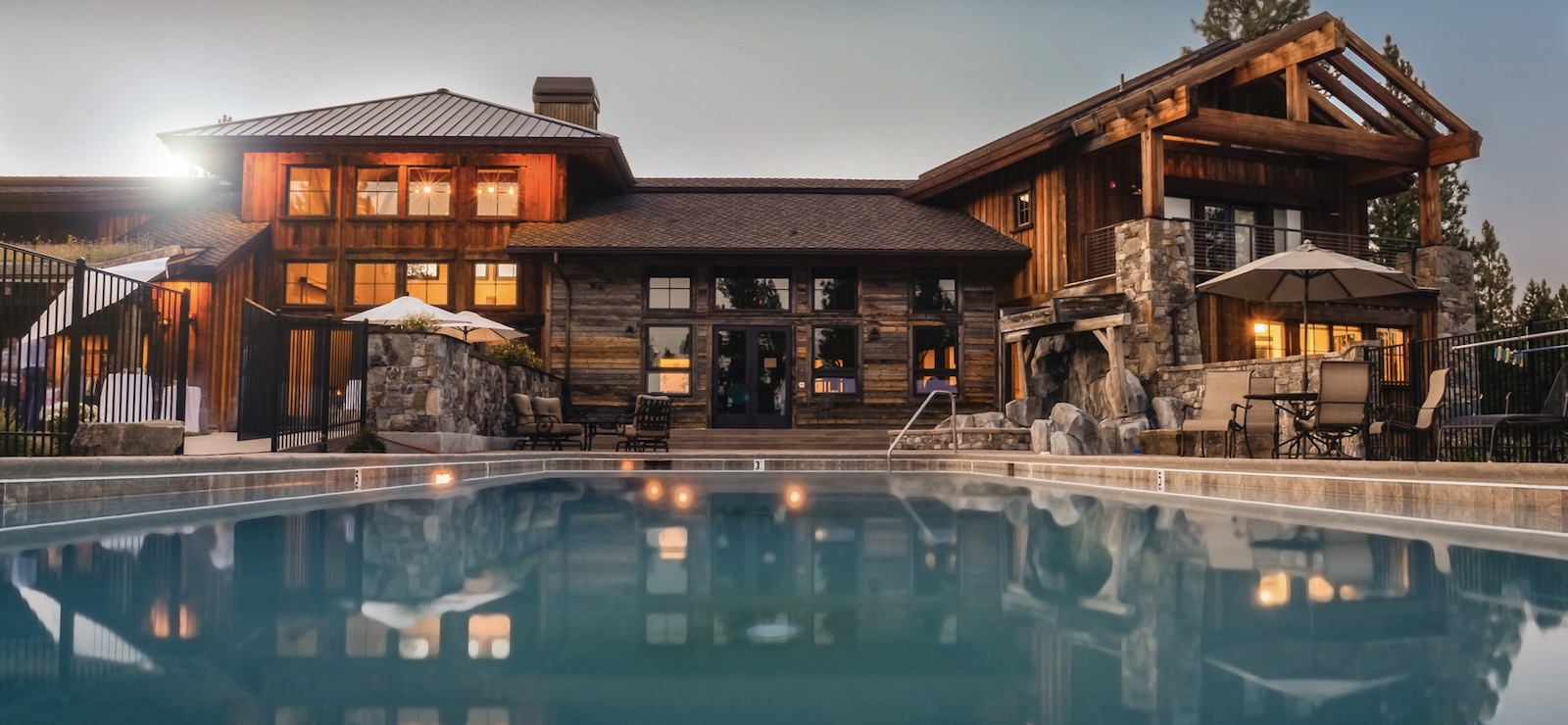Editor’s note: This three-part series on diversification is designed to provide luxury home builders with business and investment alternatives to their core business. Part I highlights complementary businesses other luxury home builders have entered to help diversify and grow their companies. Part II will review cash flow and funding issues, and discuss sources of capital that can be tapped for purposes of expansion. Part III will offer diversified investment opportunities outside the construction industry.
Because the luxury housing business is going well despite the recent economic slowdown, some might think this sector of the economy is recession-proof. But other, more realistic luxury builders know that a great way to hedge their bets against a recession is to keep their fingers in more than one pie. The logic behind diversifying from one part of the housing sector to another is to provide other opportunities for cash flow, sometimes regardless of how the economy is performing. If, for example, a downturn dramatically reduces custom home construction, rental properties might provide sufficient income to cover fixed costs of the construction company. (And they might provide a place for company carpenters to work.) Among the opportunities:
Residential Remodeling
A logical first step for a luxury home builder considering diversification is residential remodeling. First, the cost of entering that sector of the industry is minimal. Second, the assumption exists among many in the business that remodeling a home is similar to building a home.
A luxury home builder with ties to an architect probably has the inside track on high-end remodeling projects. Though the businesses are markedly different (working in a home where your customer resides as opposed to working on a home where your customer merely visits), some aspects overlap.
Large additions, for example, are similar in concept to constructing new homes, and an array of subcontractors could probably tackle the job. The difference, of course, lies in blending new materials with existing components and finishes. From those who have tried, fair warning to any luxury home builder who doesn’t appreciate the complexities of remodeling: Be prepared to spend a good portion of your estimated gross profit as “tuition” for the learning experience.
It would be invaluable if the luxury home builder or a project supervisor had remodeling experience. That would allow for appropriate guidance to subcontractors and carpenters when structural and finish components have to blend. (And don’t forget the hand-holding required for the family living amid the remodeling project. Posting a construction schedule is very significant to a resident, as opposed to a soon-to-be owner.)
Steve Shaw of Shaw Built Inc., Mountain Lakes, N.J., cautions that every luxury home builder should not undertake residential remodeling projects. Shaw says his company found remodeling to be a completely different type of business. “While there are a lot of similarities in the construction end, they are different in their execution. If you are used to building on your own lots, you have a clean slate and total control. It’s totally your job.” Not so with remodeling.
Shaw also found earnings to be significantly lower in remodeling. “Economies of scale come into play,” he says. And he’s mathematically correct. A 20% gross profit margin on a $500,000 home is still greater than a 35% gross profit margin on a $250,000 remodel.
But if residential remodeling is to be pursued by luxury home builders, they should remember to prospect among their previous new home customers. It’s common for owners of new homes to upgrade or remodel a few years after moving in, and previously satisfied customers should welcome the person who knows their home best: their builder.
Single-Lot Spec Residential
Luxury home builders usually have a good understanding of the neighborhoods where they build. This knowledge, coupled with adequate working capital and rapport with a local bank, might allow for the construction of “spec” homes.
While building a home on speculation might provide additional income to a luxury home building company (when the spec home is sold), it also can sap cash from an otherwise thriving company. Hence, you must establish adequate lending reserves before undertaking any project of this nature.
Starting with the purchase of land at the “right” price, luxury home builders can add spec construction as a company adjunct. And buying at the “right” price might entail visiting or reviewing numerous lots until the right opportunity presents itself. Thus, a loyal Realtor well-versed in spot lot acquisition, a stable of subcontractors who work in a timely fashion, and a residential sales Realtor who can market and sell a new home are all necessary for a spec house to be profitable.
Spec Remodeling
Understanding the housing market in the community where you work is also critical to spec remodeling. The concept entails buying an existing, undervalued property in a higher-end community, performing extensive remodeling and then selling the refurbished house. Property costs, carrying charges, remodeling expenses, Realtor fees and all other related expenditures must be loaded onto a spreadsheet to determine whether remodeling a prospective property is feasible.
Once again, builders must rely on Realtors and subcontractors so they can lock in costs before tackling the project. Estimated and actual costs can vary significantly, especially for those who have never engaged in remodeling work. Zoning issues might affect remodeling plans, and unexpected site work can add to the mix as well (as in the necessity for septic field expansion when adding bedrooms).
There are no rules of thumb when costing out a remodeling project that will be converted to a potential sale. But be assured that some multiple should be placed on projected expenses to account for such potential cost-draining issues as a delay in selling the property, unexpected remodeling surprises and professional fees. While potentially lucrative if completed in the right community, even a well-planned project can yield unwelcome surprises.
Residential Rental
Understanding your local housing market and keeping a stable of subcontractors are also key to owning properties (but don’t ever disregard the need to find good tenants).
Economies of scale should be analyzed before building or purchasing residential properties for rental. For example, a spreadsheet analysis could reveal that purchasing a two-family home might yield more income than a single-family home. Other considerations factor into the equation as well. As opposed to a 100% vacancy rate if a tenant leaves a single-family home, a 50% vacancy rate occurs if a tenant leaves a two-family home.
When considering whether to build a property for rental purposes, builders should apply a different standard than if the property was being built for sale. Certain finishes, for example, might be less conducive to long-term wear than others (linoleum vs. ceramic tile, carpet vs. hardwood). And certain other selections (interior and exterior trim, for example) might not yield a higher monthly rental and should not be included when the property is built.
Light-Commercial Construction
As with other aspects of construction, a luxury home builder with ties to the business community can use those contacts for business diversification. To those outside the industry, construction is construction, and all builders and remodelers have probably been asked to perform work outside the scope of their business.
Wickman Construction and Real Estate, a diversified building company in Minocqua, Wis., discovered that its local reputation led to construction for commercial accounts. When a local businessman needed a building built for his company, he turned to Wickman, which now uses its crews for residential construction, light commercial construction and remodeling. Realizing there were more opportunities with their new home customers, Wickman has further diversified into interior finishes such as cabinetry and floor and wall coverings. Looking to extend relationships with customers even further, the company expanded into real estate sales. Wickman now can sell lots to custom home prospects as well as sell homes it previously built for customers who are relocating.
While the jump from residential to commercial might not be for everyone, certain similarities allow for the transition (especially when comparable building components are used, such as wood framing). Provided the subcontractors understand commercial building code issues, light commercial construction might be a more natural progression for a luxury home builder than other residential work.
Light-Commercial Renovation
Office and retail space requires retrofit every time a tenant vacates. And a property owner or site manager typically requires a general contractor to oversee the remodeling work. Often, the key component to a successful light commercial renovation is timing. A contractor who completes the retrofit without impeding the rental schedule probably can secure repeat business in the same building.
While it might be logical to assume a progression exists from residential remodeling to light commercial renovation, Deimler & Sons Construction in Harrisburg, Pa., followed a different path. In fact, Deimler’s entry into custom home building was derived from its success in light commercial work.
“Light commercial renovation cultivated a whole new set of subcontractors,” vice president Craig Deimler says. “The demanding time frame and size of the jobs were something our residential remodeling subcontractors were not used to.” Thus, Deimler & Sons found the trade-intensive light commercial work to be more comparable to custom homes than remodeling and was more successful on its second foray into new homes than its first. (Deimler’s first attempt at building new homes after running a remodeling company proved costly. It put too much into the new homes and didn’t turn a profit.)
Light-Commercial Rental
A number of concepts that apply to owning residential properties for rental purposes also apply to owning commercial properties. If commercial space is to be built, cash flow (on paper) has to be positive. That means locking in construction costs by getting competitive (and accurate) bids almost at the conceptual stage. But the benefits to owning light commercial property can be numerous.
Similarly, the financials have to work if existing light commercial space is to be bought. As with buying stocks, it also helps to understand why someone is selling the space. Problems with the tenants? The neighborhood? The economy?
Jack Atkins of Premier Homes of Crossville Inc. in Crossville, Tenn., found that owning and leasing warehouses provides “a good stream of income” when the economy slows and construction is affected. He found that warehouse-type properties are needed during slow as well as expanding economies. Tenants move to larger properties during their growth phase, and other companies need to store surplus inventory during slow times. With a slowing market for new home construction, “I realize now that if I had stuck with spec building and tract building only, I would be in a tough spot right now,” Atkins says.
Property Management
A builder with a Rolodex filled with dedicated carpenters and subcontractors is a natural for some features of property management. (Rent collection and leasing were probably not covered in “basic builder school.”) With that in mind, some builders have assumed those responsibilities.
Although the path traveled by Rochford Realty and Construction, Nashville, Tenn., might have a few more twists than the paths of others in the construction industry, the company’s diversification into property management is worth noting. Since Rochford started more than 25 years ago, the company’s fortunes have included spec homes, custom homes and tract building. Along the way, relationships with others have brought the company such opportunities as senior housing, cable television, a hotel and restaurant, and property management.
The latter began when Rochford started to manage a family-owned office building and then added a family-owned apartment building. When the opportunity came to build a hotel, the company added the management of that entity, and continued with a senior living community. It also has managed homeowner associations and even took on ownership of a cable TV company so one of its subdivisions could be connected. “We’ve tried to position ourselves to bridge the gap between the [economic] pendulum swings,” vice president Trey Rochford says. “We rely on other areas to be profitable through the use of vertical integration. We want to straddle the economic cycles.”
Small Subdivisions
A seemingly natural progression for many custom builders is building a small subdivision. A builder can take one of two primary paths: buying an approved project or taking raw land through the approval process.
In simplistic terms, buying an approved project means the builder can begin the project almost immediately. The sales trailer can go on site, permits for the first house or model home can be submitted, and the project can be under way. Buying approved land, however, means a builder can profit only on the homes being built. Unless the housing and land markets are speculatively high, a builder probably can’t build much profit into recently acquired land.
“If you include land development,” says Shaw of Shaw Built, “where the risks are so much greater, the rewards are also much higher.” This allows a builder to profit from land development and home construction.
But this introduces a few wrinkles: working with personal profits (instead of client funds), significant bank loans and land development. Developing land for a subdivision includes engaging new members for the diversification team: Realtors specializing in raw land, engineers and land-use attorneys.
Bottom line: For the novice tract builder, learning lessons at this level can be brutally expensive. Time spent speaking with others who have tried (including those who have failed) would probably be time well-spent.
Stan Ehrlich, a past president of his 550-member local builders association, is a personal financial adviser in Clinton, N.J. To comment on this story or submit an idea for a future article, e-mail him at sfehrlich@rcn.com.













